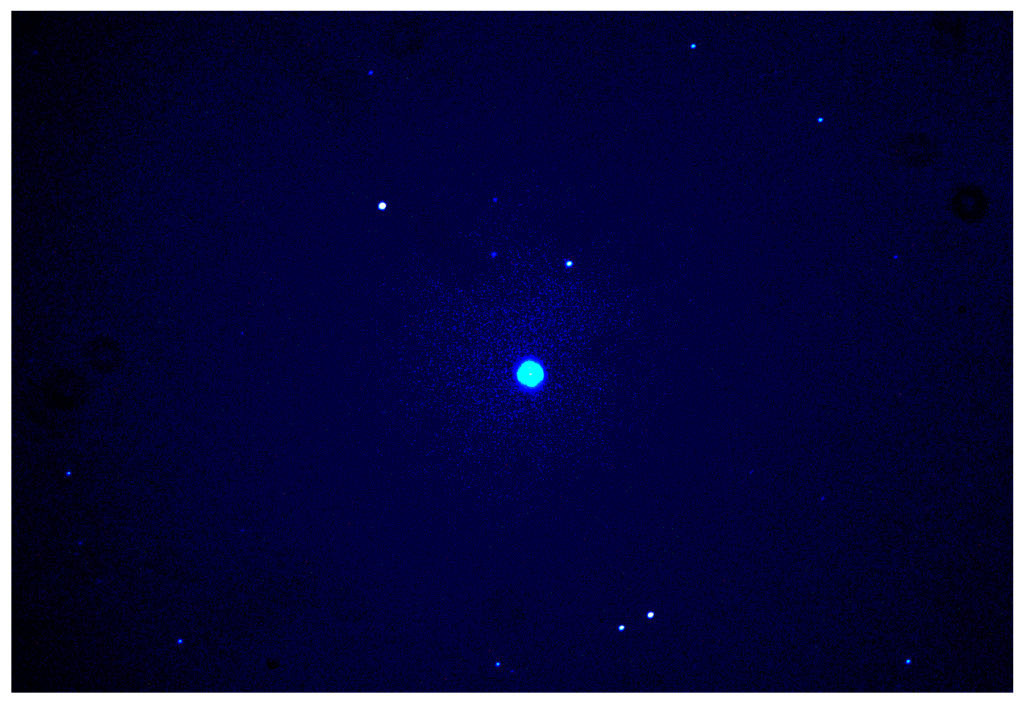
Date & Time: April 3, 2025, 9:00 PM
Location: El Camino College
Observer: [User]
Equipment: [Assumed Celestron C11 or similar; details not specified]
🌌 Observation Summary:
This image titled “Ghost Jupiter” captures a faint and possibly motion-blurred or seeing-distorted representation of Jupiter. The observation was conducted under nighttime conditions, and the planetary disk exhibits ethereal brightness with low contrast, consistent with atmospheric distortion or overexposure during tracking.
🔍 Image Analysis:
- Image Format: TIFF, grayscale
- Resolution: {image_np.shape[1]} × {image_np.shape[0]} pixels
- Mean Intensity: 8.45
- Standard Deviation: 24.42
- Maximum Pixel Intensity: 255 (possible oversaturation at core)
- Minimum Pixel Intensity: 0 (background level)
These values suggest the object (Jupiter) is significantly brighter than the background, but surrounding features might be faint or obscured due to motion, atmospheric turbulence, or extended exposure artifacts — hence the term “Ghost”.
🌠 Interpretation:
The intensity distribution shows a strong core region surrounded by a faint halo, potentially indicating:
- Poor seeing or tracking
- Overexposed central region
- Long exposure causing ghosting
- Possible presence of moons or reflection artifacts
🔧 Recommendations:
- Stacking: Combine with multiple frames for noise reduction.
- Deconvolution: Use post-processing to correct for motion blur or seeing.
- Contrast Stretching: To enhance surrounding Jovian moons (if present).
- Guiding Calibration: Improve telescope tracking precision for next sessions.